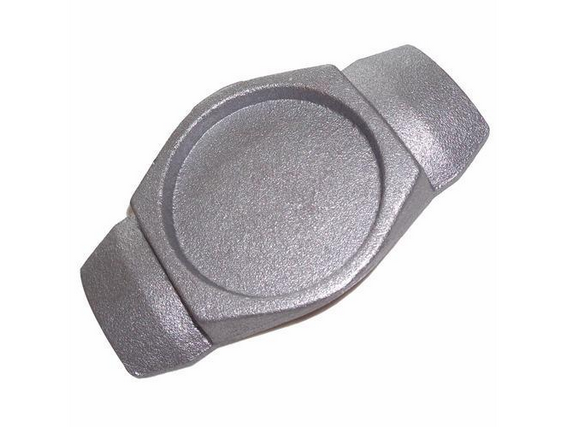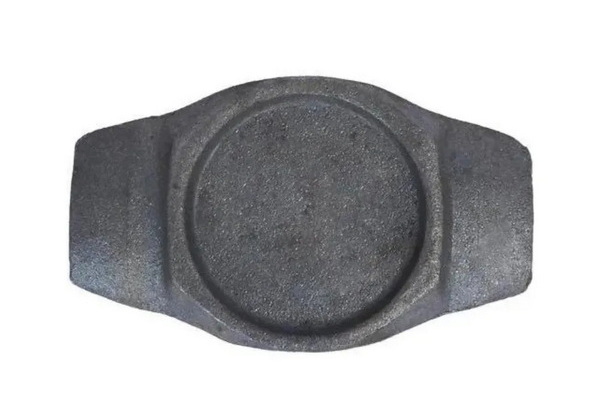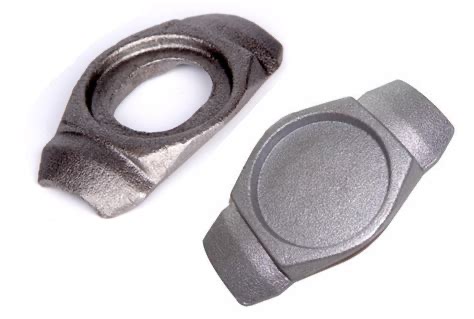Content Menu
● Introduction to Ledger Blade Scaffolding System
● Key Features and Technical Advantages
● Industries That Use Ledger Blade Scaffolding Systems the Most
>> 1. Building Construction
>>> High-Rise and Commercial Buildings
>>> Facade Works
>> 2. Industrial Plants and Factories
>>> Heavy Industry and Manufacturing
>>> Maintenance and Shutdowns
>> 3. Infrastructure: Bridges, Tunnels, and Transportation
>>> Bridge Construction and Repair
>>> Tunnels and Underground Works
>> 4. Oil, Gas, and Petrochemical Industries
>>> Refineries and Offshore Platforms
>>> Tank Farms and Pipelines
>> 5. Event Staging and Temporary Structures
>>> Concerts, Festivals, and Sports Events
>>> Temporary Access and Public Structures
>> 6. Shipbuilding and Marine Engineering
>>> Shipyards and Dry Docks
>>> Offshore Maintenance
>> 7. Restoration and Heritage Projects
>>> Historic Buildings and Monuments
● Why Do These Industries Prefer Ledger Blade Scaffolding Systems?
● Technical Overview: How Ledger Blade Scaffolding Systems Work
● Maintenance and Best Practices
● Expanding Applications: Modular Innovation and Digital Integration
>> Digital Planning and BIM Integration
>> Sustainability and Reusability
>> Training and Safety Programs
● Conclusion
● FAQ
>> 1. What is a ledger blade scaffolding system and how does it differ from traditional scaffolding?
>> 2. Which industry uses ledger blade scaffolding systems the most?
>> 3. Are ledger blade scaffolding systems safe for use in hazardous environments?
>> 4. Can ledger blade scaffolding systems be customized for unique project needs?
>> 5. What maintenance is required for ledger blade scaffolding systems?
Ledger blade scaffolding systems, particularly those using the cuplock or ringlock mechanism, have revolutionized the way industries approach construction, maintenance, and access solutions. Their adaptability, strength, and efficiency make them indispensable across a broad spectrum of sectors. This comprehensive article explores the industries that rely most heavily on the ledger blade scaffolding system, delving into the reasons behind its popularity, key applications, and the technical advantages that set it apart.

Introduction to Ledger Blade Scaffolding System
A ledger blade scaffolding system is a modular structure composed of vertical standards, horizontal ledgers (with forged blades at both ends), and diagonal braces. The ledger blades are designed to lock securely into cups or rosettes on the standards, creating a rigid, stable frame without the need for nuts or bolts. This design ensures rapid assembly, high load-bearing capacity, and exceptional safety.
Key Features and Technical Advantages
- Rapid Assembly & Dismantling: The unique cup and blade locking mechanism allows for quick setup and breakdown, saving time and labor costs.
- Enhanced Stability: The system distributes weight evenly, reducing the risk of collapse even under heavy loads.
- Versatility: Ledger blade scaffolding systems can be configured for straight, curved, or irregular structures, and are suitable for both simple and complex projects.
- Durability: Components are typically made from high-strength, galvanized steel, offering corrosion resistance and a long service life.
- Minimal Tools Required: Assembly requires few, if any, specialized tools, reducing the risk of lost parts and simplifying logistics.
- Safety Compliance: Designed to meet or exceed international safety standards, including OSHA, ANSI, and CSA.
Industries That Use Ledger Blade Scaffolding Systems the Most
1. Building Construction
High-Rise and Commercial Buildings
The construction industry is the primary user of ledger blade scaffolding systems. From residential towers to sprawling commercial complexes, these systems provide safe, efficient access for workers at all heights. Their modularity allows for continuous working platforms, birdcage structures for interior work, and staircase towers for vertical access.
Facade Works
Ledger blade scaffolding systems are ideal for facade scaffolding, enabling workers to perform cladding, painting, window installation, and maintenance with ease. The ability to create continuous platforms at varying heights is a significant advantage.
2. Industrial Plants and Factories
Heavy Industry and Manufacturing
Factories, refineries, and power plants require robust scaffolding for construction, maintenance, and repair of large, complex structures. The ledger blade scaffolding system's high load-bearing capacity and adaptability to irregular geometries make it the system of choice for these environments.
Maintenance and Shutdowns
Industrial maintenance often involves accessing hard-to-reach areas, sometimes under time constraints during plant shutdowns. The quick assembly and dismantling of ledger blade scaffolding systems minimize downtime and ensure safety.
3. Infrastructure: Bridges, Tunnels, and Transportation
Bridge Construction and Repair
Ledger blade scaffolding systems are extensively used in bridge construction and maintenance for their ability to span large gaps and support heavy loads. Lattice beams and trusses can be integrated to create stable platforms for workers and equipment.
Tunnels and Underground Works
The modularity and flexibility of these systems allow them to conform to curved and confined spaces, making them ideal for tunnel construction and maintenance.
4. Oil, Gas, and Petrochemical Industries
Refineries and Offshore Platforms
Safety and reliability are paramount in oil and gas operations. Ledger blade scaffolding systems provide secure access for inspection, maintenance, and construction in hazardous environments. Their corrosion-resistant finishes and ability to support heavy equipment are crucial in these sectors.
Tank Farms and Pipelines
Customizable configurations enable scaffolding to be erected around tanks, along pipelines, and in other challenging locations, ensuring safe access for workers.
5. Event Staging and Temporary Structures
Concerts, Festivals, and Sports Events
Beyond industrial and construction uses, ledger blade scaffolding systems are widely employed in the events industry. Their modular nature allows for the rapid assembly of stages, grandstands, viewing platforms, and temporary walkways, all of which require high stability and safety.
Temporary Access and Public Structures
Events often require the creation of safe, temporary access points for large crowds. The ledger blade scaffolding system's quick assembly and adaptability make it ideal for these applications.
6. Shipbuilding and Marine Engineering
Shipyards and Dry Docks
Shipbuilding and repair demand scaffolding that can be quickly adapted to the contours of hulls and superstructures. The ledger blade scaffolding system excels in these environments, offering both flexibility and strength.
Offshore Maintenance
Corrosion resistance and the ability to withstand harsh marine conditions make these systems a staple in offshore maintenance projects.
7. Restoration and Heritage Projects
Historic Buildings and Monuments
Restoration of heritage structures often requires non-invasive, highly adaptable scaffolding. The ledger blade scaffolding system can be configured to fit irregular and delicate surfaces, providing safe access without damaging historic fabric.

Why Do These Industries Prefer Ledger Blade Scaffolding Systems?
- Speed and Efficiency: Tight project timelines demand fast assembly and dismantling, a hallmark of the ledger blade system.
- Adaptability: The ability to create custom configurations for irregular shapes, heights, and site conditions is essential in diverse industries.
- Safety: Robust locking mechanisms, guardrails, toe boards, and compliance with international standards ensure worker safety.
- Cost-Effectiveness: Reusable, durable components lower long-term costs, especially in industries with frequent scaffolding needs.
- Minimal Maintenance: Galvanized finishes and simple designs reduce maintenance requirements and extend equipment life.
Technical Overview: How Ledger Blade Scaffolding Systems Work
The ledger blade scaffolding system uses a cup-and-blade or rosette-and-blade mechanism:
- Vertical Standards: Tubular steel posts with cups or rosettes welded at regular intervals.
- Horizontal Ledgers: Tubes with forged blades at each end that fit into the cups or rosettes.
- Diagonal Braces: Provide lateral stability, preventing sway and collapse.
- Assembly: The ledger blades are inserted into the lower cups or rosettes, and the upper cup is rotated and hammered down to lock the connection, creating a rigid, load-bearing structure.
Maintenance and Best Practices
Proper maintenance is critical for safety and longevity:
- Regular Inspections: Check for wear, corrosion, and secure connections before and after use.
- Cleaning: Remove dirt and debris to prevent rust and ensure clear visibility of defects.
- Storage: Store components in dry, organized conditions to prevent damage and prolong life.
- Training: Ensure all personnel are trained in assembly, use, and dismantling procedures.
Expanding Applications: Modular Innovation and Digital Integration
Digital Planning and BIM Integration
Modern ledger blade scaffolding systems are increasingly integrated with digital planning tools and Building Information Modeling (BIM). This allows project managers and engineers to visualize scaffolding layouts in 3D, coordinate with other trades, and optimize material usage before components ever reach the site. Digital integration reduces errors, speeds up approvals, and ensures that the ledger blade scaffolding system is tailored precisely to project needs.
Sustainability and Reusability
Industries are also turning to ledger blade scaffolding systems for their sustainability. The modular, reusable components reduce waste and environmental impact. Systems are designed for long service life, and many manufacturers offer repair and refurbishment services to further extend the lifespan of each ledger blade scaffolding system.
Training and Safety Programs
Leading companies provide comprehensive training for assembly, inspection, and safe use of ledger blade scaffolding systems. This includes on-site demonstrations, digital resources, and certification programs, ensuring that crews are fully prepared to use the system safely and efficiently.
Conclusion
The ledger blade scaffolding system has become the backbone of access solutions in construction, industry, infrastructure, events, shipbuilding, and restoration. Its rapid assembly, adaptability, strength, and safety make it the preferred choice for projects where reliability and efficiency are paramount. As industries continue to evolve and demand more from their scaffolding systems, the ledger blade scaffolding system will remain at the forefront, delivering robust solutions for every challenge.

FAQ
1. What is a ledger blade scaffolding system and how does it differ from traditional scaffolding?
A ledger blade scaffolding system uses horizontal ledgers with forged blades at each end, which lock into cups or rosettes on vertical standards. This design eliminates the need for nuts and bolts, allowing for faster assembly and greater stability compared to traditional tube-and-coupler scaffolding.
2. Which industry uses ledger blade scaffolding systems the most?
The construction industry is the largest user, especially for high-rise buildings, facades, and infrastructure projects. However, industries such as oil and gas, shipbuilding, events, and industrial maintenance also rely heavily on these systems due to their adaptability and strength.
3. Are ledger blade scaffolding systems safe for use in hazardous environments?
Yes. These systems are engineered to meet strict international safety standards, and their robust locking mechanisms and corrosion-resistant finishes make them suitable for hazardous environments like refineries, offshore platforms, and shipyards.
4. Can ledger blade scaffolding systems be customized for unique project needs?
Absolutely. The modular nature of the system allows for custom configurations to fit irregular shapes, curved surfaces, and varying heights, making it ideal for complex projects such as heritage restoration, tunnel construction, and event staging.
5. What maintenance is required for ledger blade scaffolding systems?
Regular inspections, cleaning, and proper storage are essential. Components should be checked for wear, corrosion, and secure connections. Galvanized finishes help reduce maintenance needs, but routine care ensures safety and extends equipment life.






















